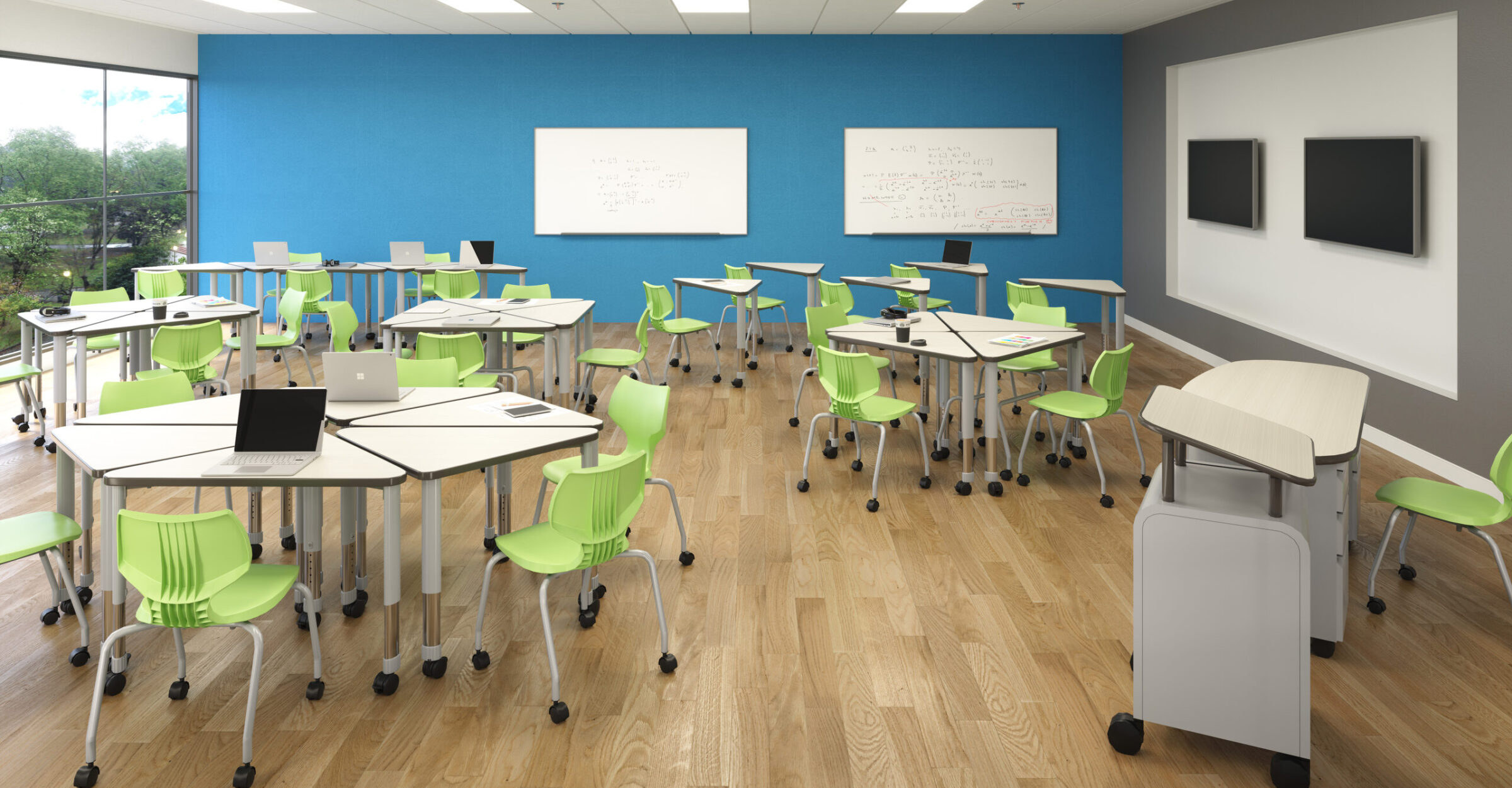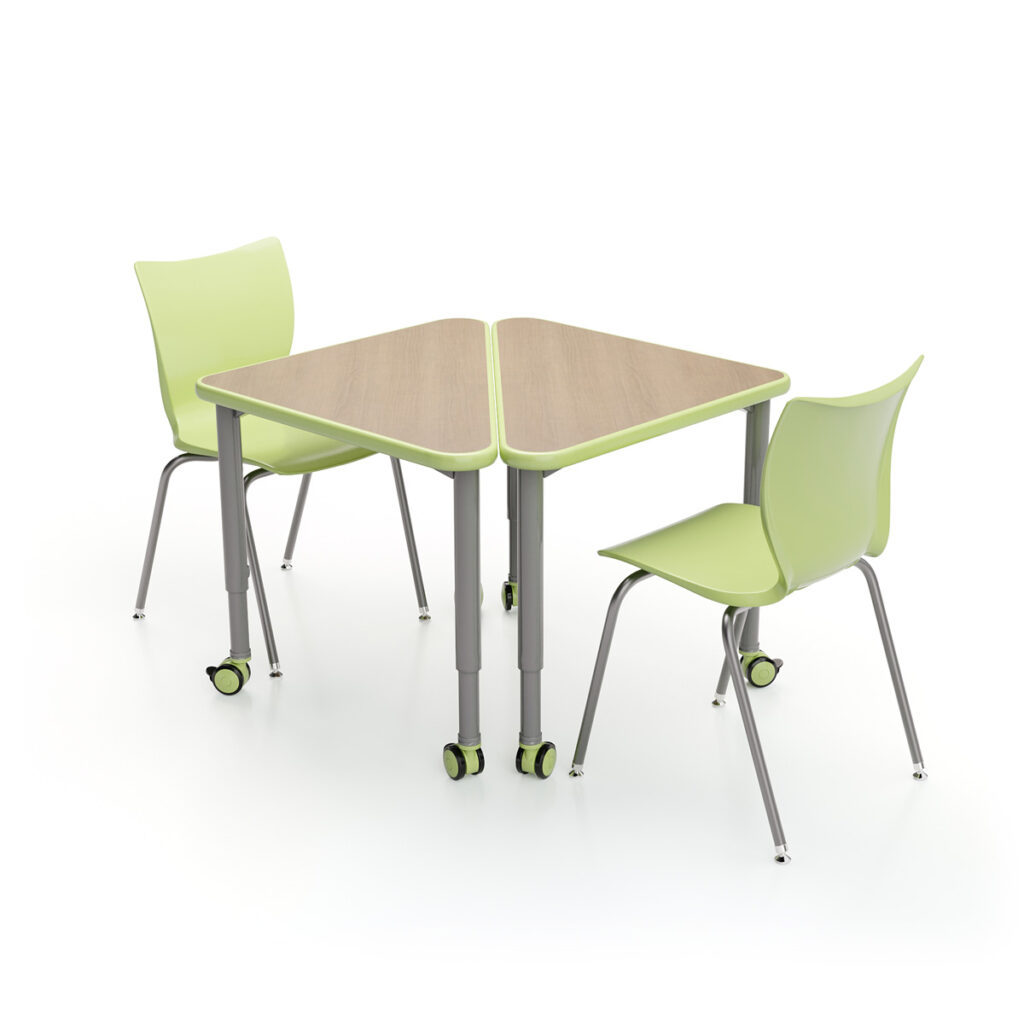Collaborative Learning
An active learning environment has no room for passive furniture.
What’s so important about collaborative school furniture? Well, if a swim team tried to practice on wrestling mats it wouldn’t get very far because the environment is wrong for the learning process. Same thing with a collaborative learning classroom: because it’s student-centered learning – the polar opposite of traditional, information transfer learning – it needs furniture that supports it, starting with collaborative desks and collaborative seating.
Is collaborative school furniture 180° different than traditional furniture?
It’s just more flexible. While collaborative learning furniture can be used in a traditional classroom, the opposite isn’t true. The reason is, regular, rectangular desktops can’t create a close circle to allow groups of six or more students to engage in collaborative learning. What Smith System® discovered was that trapezoidal and arc-shaped desktops could be clustered in very compact circles of six to eight students for group work. Or, the desks can be separated for individual study or testing.



Four Different Options
If you’re thinking that collaborative school furniture offers the ultimate classroom flexibility, we’ve gone a step farther by offering many choices of collaborative furniture. Smith System® Interchange®, Elemental®, Silhouette®, and Planner® lines offer from one to four collaborative desk options. So, you don’t have to base your decision solely on functionality. And within each line, you can choose from scores of work surface, edge band, and frame color combinations. No other manufacturer gives you so many options in creating a collaborative learning environment.
Seating qualifies as collaborative furniture, too.
Really. In a collaborative learning classroom, students interact with others located all around them. At Smith System®, we’ve taken this dynamic into account with the design of our collaborative chairs. Our Flavors® Seating offers the most freedom, allowing the student to comfortably face front, back, and both sides. The seatback also offers reduced resistance to the student who needs to twist to the right or left. On the other end of the spectrum is our Groove® Seating allowing the student to comfortably face the front and both sides. High-tech injection molding not only keeps the seatback strong and flexible, but it eliminates the exposed structural “ribs” on the back of the chair’s shell. Its back provides a bit of flex and promotes a healthy posture.
By studying and understanding collaborative learning classrooms, Smith System® has added unmatched functionality to our collaborative furniture – both collaborative desks and collaborative seating.
Education Trend
21st Hybrids Take Hold: Defining Learning Commons and Library Commons
Architects and designers are scrambling to create new hybrid spaces called learning commons and library commons.
Read more








